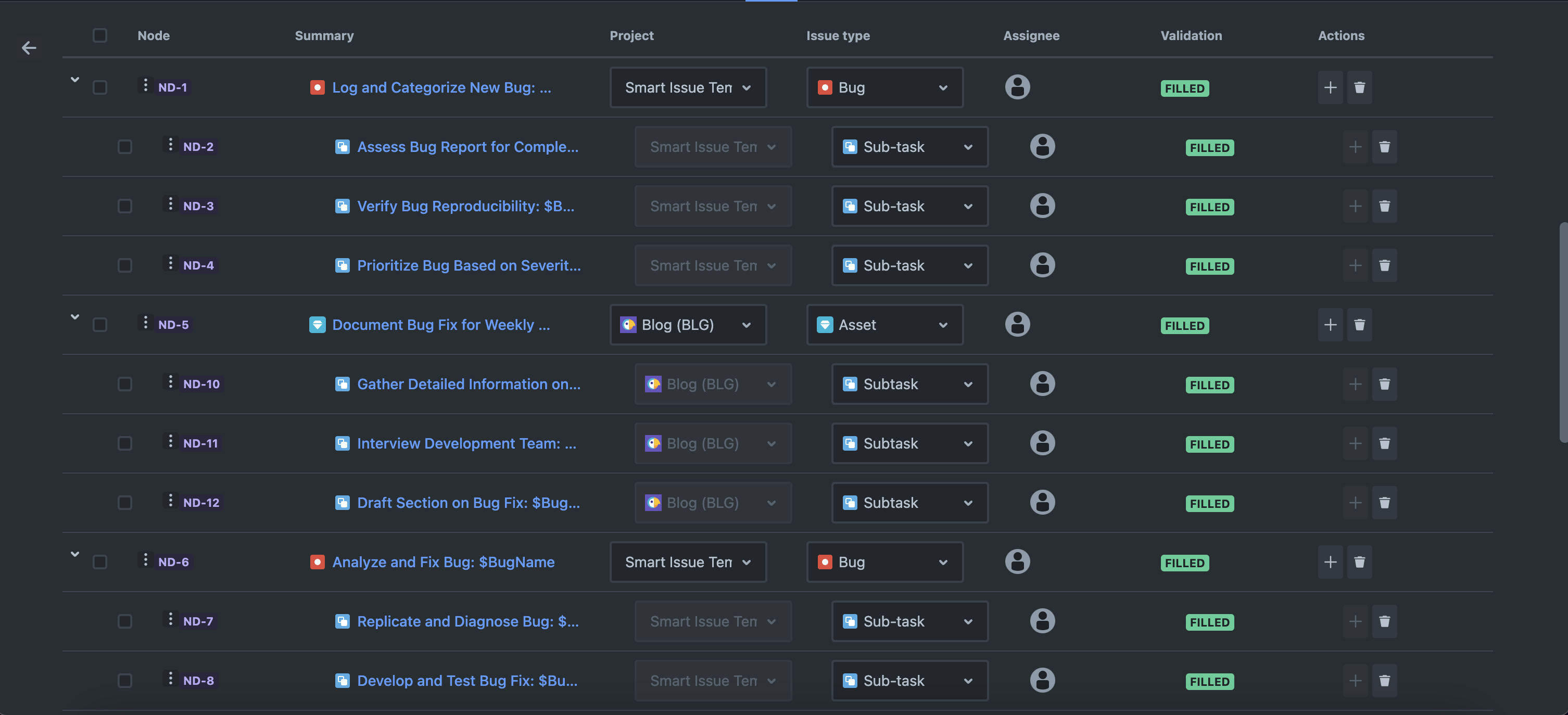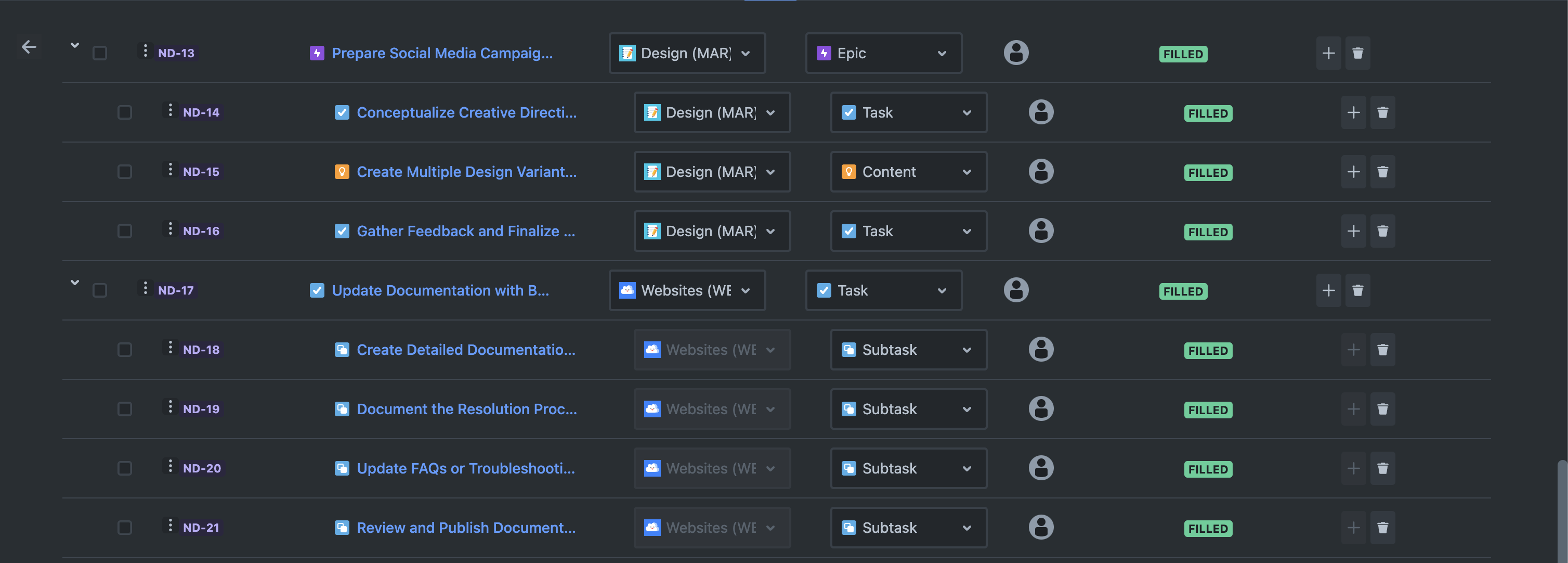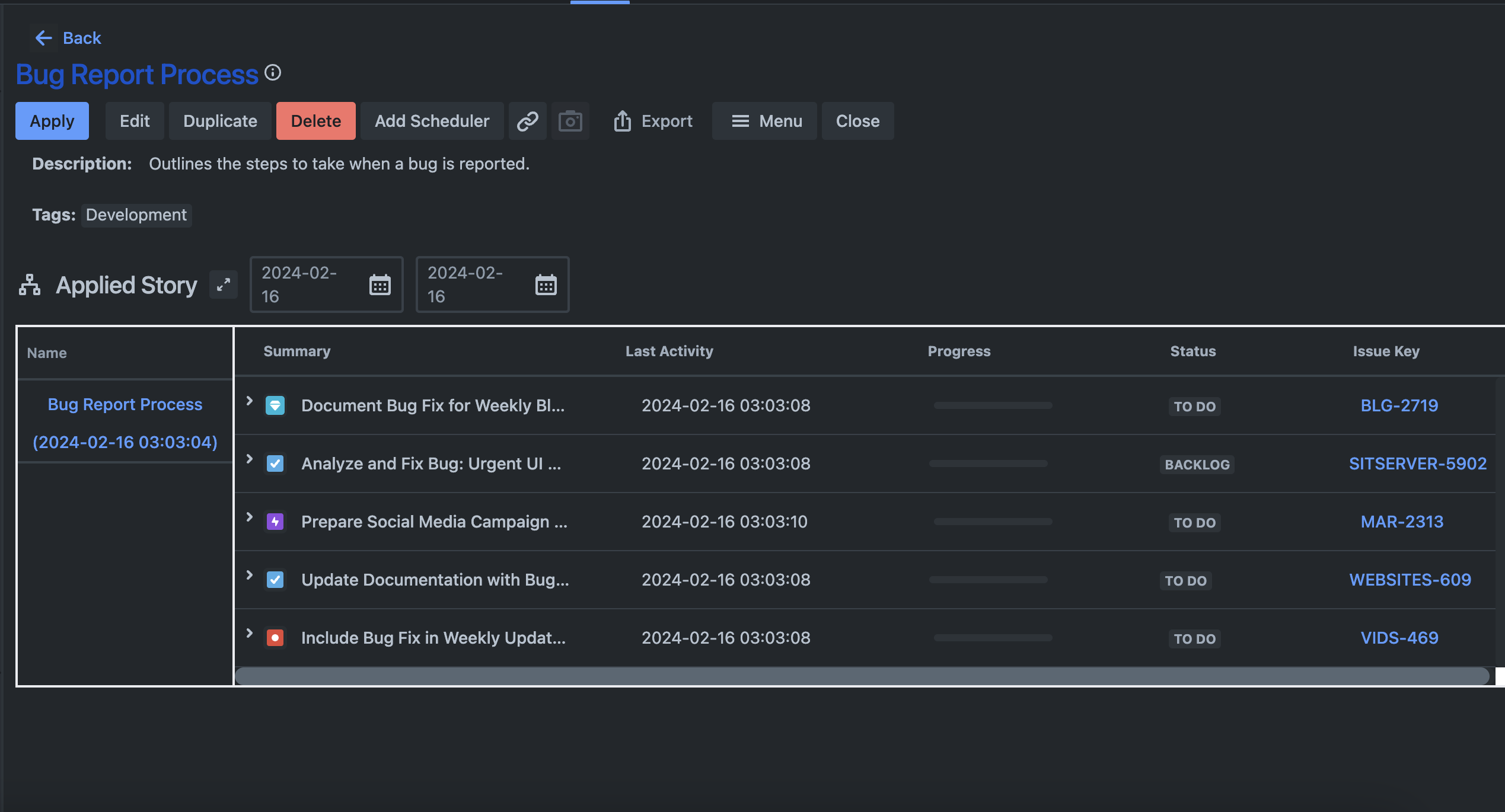Bug Reporting Process
Who can use this Hierarchy?
This hierarchy standardizes bug reporting, documenting, fixing, and announcing. It is tailored to software engineering teams.
Roles
QA Engineer & Developer
Department
Software Engineering
Industry
SaaS
Demonstration Video
Description of the Hierarchy
This document delineates an advanced framework for managing bug reporting and resolution processes within organizations utilizing Smart Issue Templates for Jira Cloud. This setup is particularly advantageous for engineering teams, fostering a meticulous and efficient approach to identifying, tracking, and resolving bugs.
Framework Purpose:
The primary aim of this framework is to optimize the bug reporting process, employing Smart Issue Templates for Jira Cloud to automate and template tasks throughout the bug lifecycle—from detection to resolution.
Main Components and Workflow:
1. Bug Detection and Reporting:
Leader: The QA Engineer spearheads the bug reporting, responsible for identifying, documenting, and ensuring the bug is logged correctly within the system.
Collaboration: This role collaborates with the Developer and Site Admin to validate the bug's impact and priority, ensuring it aligns with project goals.
2. Bug Analysis and Resolution:
Roles: The Developer takes charge of diagnosing and fixing the bug, while the Site Admin assists in replicating the issue and verifying the solution in a staging environment.
Objective: To efficiently rectify the bug while minimizing impact on the project timeline and maintaining product quality.
3. Documentation and Communication:
Role: The Blog Writer and Video Creator develop content to communicate the bug fix, focusing on transparency and educating the user base.
Marketing and Promotion: The Marketer, leveraging insights from the resolution process, crafts messages to reassure users about the commitment to quality and continuous improvement.
Supporting Infrastructure
Confluence Integration: A dedicated Confluence space serves as a dynamic repository for bug reports, resolution documentation, and best practices.
Variable Inputs: Templates are designed with variables such as “BugName”, facilitating customization and streamlining the documentation process for each bug report.
Application Across Projects:
The framework is deployed across various projects— Development, Websites, Blog, Design, Video—each tackling distinct phases of the bug reporting and resolution journey. This structured approach ensures that responsibilities are clearly delineated and tasks are systematically organized, fostering a cohesive and collaborative project environment.
Outcome and Benefits
Employing this framework revolutionizes bug management by instilling a systematic, streamlined approach from detection to communication. By leveraging templated processes and defining explicit roles and responsibilities, organizations can enhance team collaboration, improve tracking and resolution efficiency, and maintain a high standard of product integrity and user satisfaction.
.png)




